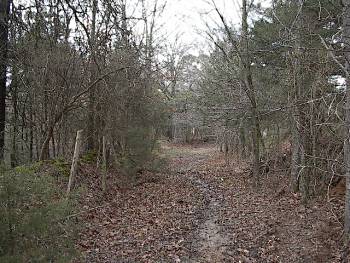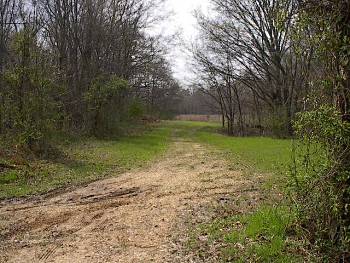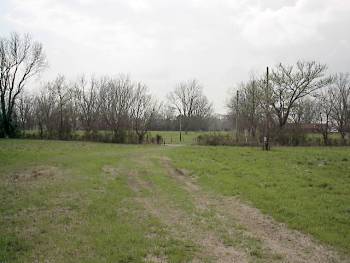
| Champion Hill Home |
| Civil War Album Home |
| Return to Yazoo Pass - Siege of Vicksburg |
![]() owen's
counter assault had hammered a bulge in the Union line at Champion Hill that
extended to just yards away from the Federal headquarters at the Champion
home. He lobbied his commander for reinforcements, thinking that one final
push would get his men into the Union rear and swing the battle in favor of
the Confederates. But just as he was steadying his lines, Union artillery
located just to the south and east of the Champion house opened a withering
fire on the Confederate front. Also, a fresh Union division under command
of Marcellus M. Crocker was deployed to halt the Confederate advance.
Slowly, Bowen's lines gave way. When he learned
that McClernand had broken through the roadblock on the Middle Road, Bowen
understood the gravity of his current predicament: Either withdraw his
troops or risk being encircled and annihilated by the strengthened Union
army. He withdrew cautiously to the crossroads, still thinking that the
upper Baker's creek bridge was the only way out.
owen's
counter assault had hammered a bulge in the Union line at Champion Hill that
extended to just yards away from the Federal headquarters at the Champion
home. He lobbied his commander for reinforcements, thinking that one final
push would get his men into the Union rear and swing the battle in favor of
the Confederates. But just as he was steadying his lines, Union artillery
located just to the south and east of the Champion house opened a withering
fire on the Confederate front. Also, a fresh Union division under command
of Marcellus M. Crocker was deployed to halt the Confederate advance.
Slowly, Bowen's lines gave way. When he learned
that McClernand had broken through the roadblock on the Middle Road, Bowen
understood the gravity of his current predicament: Either withdraw his
troops or risk being encircled and annihilated by the strengthened Union
army. He withdrew cautiously to the crossroads, still thinking that the
upper Baker's creek bridge was the only way out.
In the meantime, Loring had reemerged and informed Pemberton that he
had found another escape route. The Confederate engineers, working all day,
had finally secured a crossing over the lower Bakers Creek on the Raymond
Road. Pemberton promptly relayed this information to Bowen, who, along with
Loring, now had to act as the rear guard in the Confederate retreat.
Pemberton's army fled the field via the newly
discovered Lower Bridge Road, which intersected the Raymond Road near the
Yeiser house. It took time to get the entire army across the creek, and
Confederates posted themselves on a ridge near the Coker house where they
could shell the Union army when it came into view. It was during this
holding action where Brigadier General Lloyd Tilghman was killed by shrapnel
from a Yankee artillery shell.
When Bowen reached the lower bridge on the Raymond Road, he was to
hold it until Loring's division was safely across. Hearing cannonading in
his rear, Bowen assumed that the Federals were already in the vicinity of
Edwards and decided to withdraw to the south along the Mt. Moriah Road. He
would reunite his division with the rest of the Confederate army that
evening at the Big Black River. Loring, on the other hand, would not be
able to link up with the rest of his army. Seeing the lower bridge in
possession of the Yankees, he withdrew southward to Crystal Springs and
would later hook up with Joseph Johnston near Jackson.
Retreat, May 16
 |
 |
|
|
Despite Confederate General Loring's seeming ineptitude during the Battle of Champion Hill, it is possible that he is responsible for the survival of Pemberton's Vicksburg field army. Bowen's counterassault on the Union forces at the crossroads had come up short just yards from the Union wagon trains near the Champion House. While Bowen's men were being repulsed from Champion Hill, Loring was scouting the roads south of the main action searching for an alternate escape route. He found the Lower Bridge Road which cut provided Pemberton an easy route from the Ratliff Road to the Raymond Road crossing of Bakers Creek. The picture above shows the Ratliff Road trace south of the Roberts House near where it ties in with the Lower Bridge Road. The view is looking south Locate on Map |
View of the Lower Bridge Road. The bulk of the Confederate army retreating from Champion Hill took this road to the lower Bakers Creek bridge. The view is looking west toward Edwards Locate on Map |
|
 |
 |
|
|
Another
view of the Lower Bridge Road, this time approximately 150 yards
north of the Raymond Road. The view is looking northeast toward
the battlefield |
The Raymond Road runs left to right in the picture. Retreating Confederates would have turned to the right near here during their escape. The view is looking south Locate on Map |
